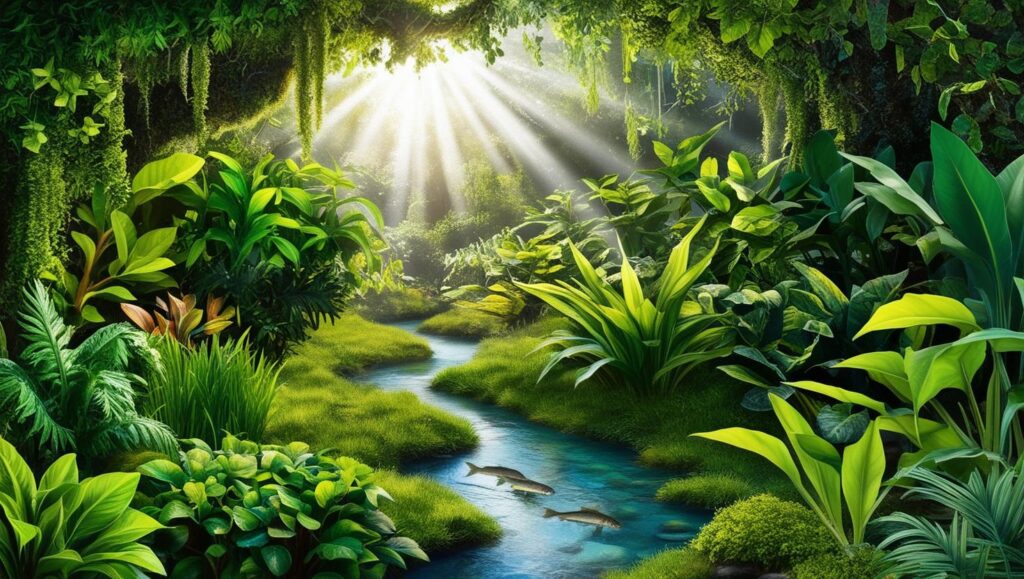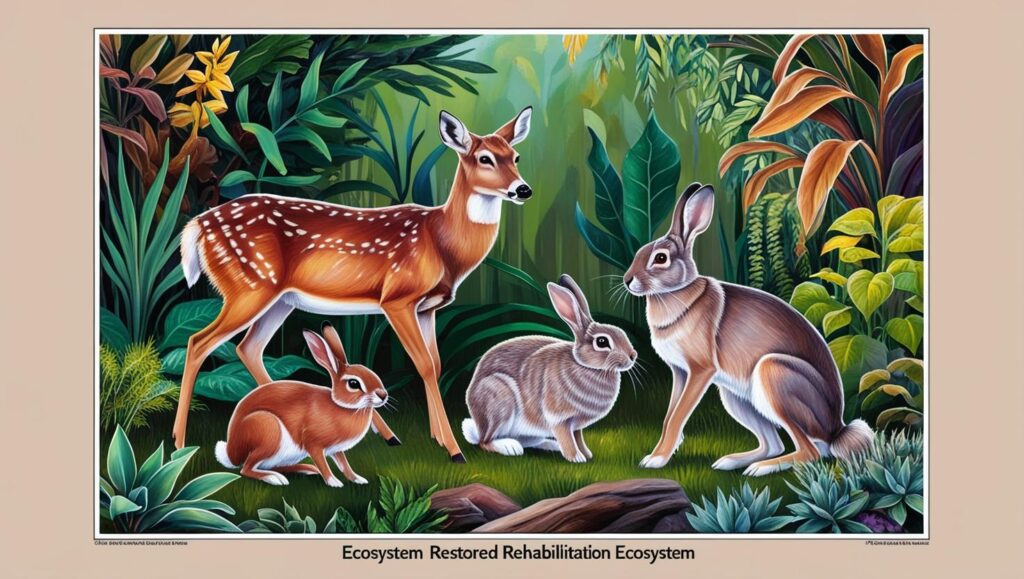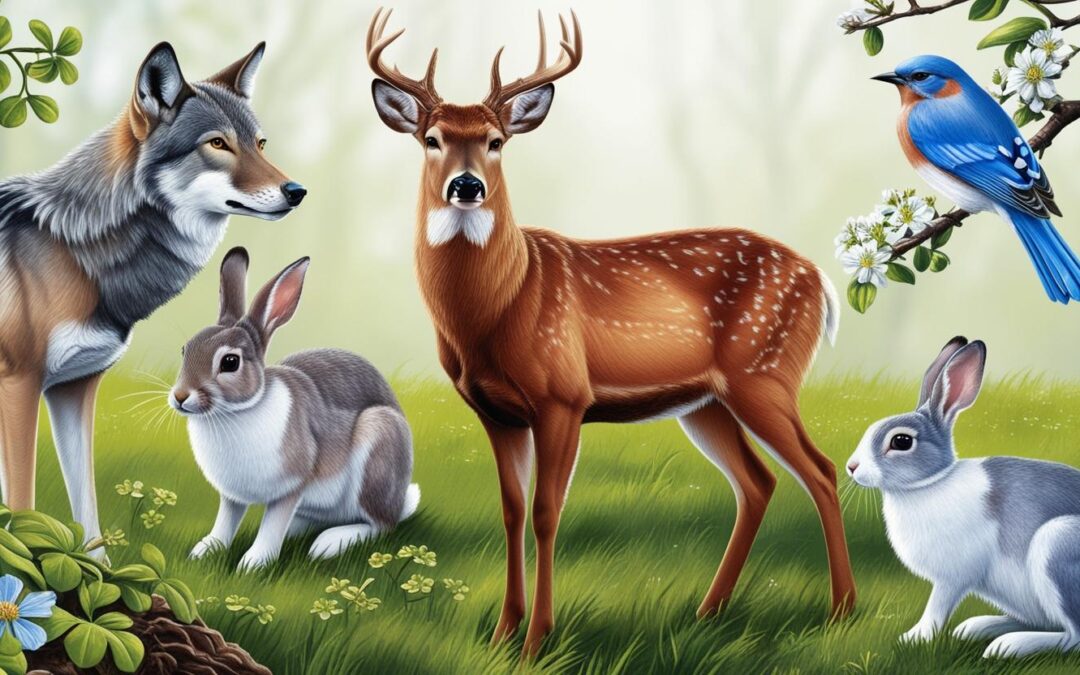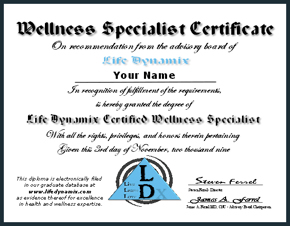Embrace the Beauty of Biodiversity
Picture a lush rainforest, alive with the symphony of chirping birds, rustling leaves, and the gentle hum of countless creatures working in harmony. This is the exquisite tapestry of biodiversity, where each thread—every plant, animal, and microorganism—plays its part in the grand mosaic of life. Explore more about the wonders of nature and its beauty.
Biodiversity is not just a term; it is the essence of our planet’s vitality and resilience. “In nature, nothing exists alone,” observed renowned biologist Rachel Carson, capturing the profound interconnectedness of all life forms.
Sadly, this delicate balance is under threat. Human activities have accelerated the rate of species extinction, now estimated to be 1,000 times the natural rate, leading to the loss of countless marvels before they can even be discovered. Understanding and cherishing biodiversity is essential, as it underpins ecosystems that sustain human life and nurture our souls.
A Delicious Connection with Nature
“In every walk with nature, one receives far more than he seeks,” mused the naturalist John Muir. Our lives are intricately woven with the threads of the natural world, a luscious tapestry where each strand supports the next.
Imagine a meadow teeming with vibrant wildflowers, butterflies dancing through sunlit air, and the soft whisper of a breeze carrying the scent of fresh earth. This is biodiversity, a testament to nature’s wonder and resilience. It is the pulse of our planet, the foundation of ecosystems that nourish and sustain us. To learn more about the importance of these ecosystems, visit this resource.
Yet, this beautiful connection is fragile. The urgency of protecting it cannot be overstated. As stewards of this Earth, we are called to cherish and preserve the exquisite dance of life that surrounds us. Let us be inspired to act, for the future of our delicious connection with nature is in our hands.
The Dwindling Tapestry of Life
“The greatest threat to our planet is the belief that someone else will save it,” warned renowned environmentalist Robert Swan. As we stand on the precipice of ecological upheaval, the tapestry of life that once flourished is unraveling at an alarming rate.
Statistics reveal a sobering reality: nearly one million species face extinction within the next few decades. The causes are manifold—habitat destruction, climate change, pollution, and overexploitation of resources contribute significantly to this decline.
The consequences ripple through ecosystems, weakening their ability to provide essential services like clean water, fertile soil, and air. These disruptions not only threaten wildlife but also the very fabric of human life, as our existence is inextricably linked to the health of our planet.
| Species | Status |
|---|---|
| Asian Elephant | Endangered |
| Amur Leopard | Critically Endangered |
| Vaquita | Critically Endangered |
We are entrusted with the guardianship of this planet. It is time to mend the fabric of nature, ensuring that future generations inherit a world that is as abundant and vibrant as the one we were blessed with.

The Art of Ecosystem Restoration
In our quest to heal the earth, the art of ecosystem restoration emerges as a beacon of hope. It is a delicious blend of science, community spirit, and ancestral wisdom that breathes life back into our wounded planet.
- Reforestation and afforestation: Planting trees to restore forests and create new green spaces.
- Wetland restoration: Reviving marshes and swamps to enhance biodiversity and water quality.
- Invasive species removal: Eradicating non-native species to allow indigenous flora and fauna to flourish.
- Soil rehabilitation: Using organic methods to restore soil health and fertility.
“The success of the Loess Plateau project in China, which transformed barren land into fertile ground, showcases the power of restoration,” said an expert. This remarkable project is a testament to human ingenuity and determination.
Equally important is the role of local communities and indigenous knowledge. These stewards of the land offer insights rooted in generations of harmony with nature. Their involvement ensures that restoration efforts are culturally resonant and sustainable.
Together, with hands and hearts united, we can weave a tapestry of renewal and resilience, crafting a world where ecosystems thrive once more.
The Urgency of Now
In this moment, the earth’s biodiversity is vanishing at an unprecedented rate. It is a call to action, a plea from our planet to halt this decline. Consider these alarming statistics:
| Statistic | Detail |
|---|---|
| Species Threat Level | Over 1 million species face extinction |
| Habitat Loss | 30% of natural habitats are degraded |
| Decline Rate | Species loss is 100 to 1,000 times higher than the natural rate |
The consequences of inaction are dire. Imagine a future where once-vibrant ecosystems are barren. Where the songs of birds and the hum of insects are silenced, leaving a stark, silent world. Human life, intertwined with nature, would face challenges in food security, clean water, and health.
Yet, hope glimmers in the form of ecosystem restoration. By embracing this urgent need, we can reverse damage, rejuvenate habitats, and restore balance. The time to act is now, for the earth’s tapestry of life and our own survival depend on it.
Your Role in This Delicious Journey
Imagine the vibrant tapestry of life around you, teeming with beauty and diversity. This is a journey we’re all a part of, and your actions can be a delicious contribution to the cause of biodiversity.
“Every small action can ignite a wave of change.”
Here are some delightful steps you can take to help:
- Plant native trees and create wildlife-friendly gardens.
- Participate in or organize local clean-up events.
- Support and volunteer for environmental NGOs.
- Educate yourself and others about biodiversity’s importance.
- Adopt sustainable living practices like reducing waste and conserving water.
By engaging with your community, you can amplify your impact. Join or form local groups dedicated to conservation efforts. Activism is a powerful tool for change.
Living sustainably doesn’t just preserve the earth’s resources—it’s a delicious way to reconnect with nature. Your choices in daily life, from the products you buy to the food you eat, ripple throughout the ecosystem. For more insights on how to feel your best while making a difference, check out this guide.
Embrace this journey with enthusiasm and commitment. Together, we can weave a future rich in biodiversity and promise.
Policy and Advocacy: The Big Picture
As we embrace the beauty of biodiversity, it’s crucial to understand the policies in place to safeguard our planet. Countries worldwide are taking steps, but the journey demands more robust strides.
| Country | Policy Highlights |
|---|---|
| Brazil | Amazon protection laws, yet facing deforestation challenges. |
| Norway | Strong forest conservation policies and carbon offset programs. |
| India | Project Tiger and other wildlife protection initiatives. |
Although strides are being made, the need for stronger environmental regulations is undeniable. Policies must be fortified to curb the alarming rates of biodiversity loss.
Your voice matters in this global chorus for change. Advocate for policy reforms by signing petitions and joining forces with advocacy groups. Organizations like the World Wildlife Fund and Greenpeace offer avenues for your support.
Policy change isn’t just a governmental task—it’s a collective effort that starts with us. Let’s rally together for a future where biodiversity thrives, and ecosystems flourish.

FAQs on Biodiversity and Ecosystem Restoration
As we journey through the urgent call to action for biodiversity and ecosystem rehabilitation, let’s address some common questions that arise in this deliciously complex field:
Q: What is biodiversity?
A: Biodiversity refers to the variety of life on Earth, including all species of plants, animals, and microorganisms, as well as the ecosystems they form. It’s the vibrant tapestry that makes our planet so alive.
Q: Why is biodiversity important for humans?
A: Biodiversity supports ecosystem services like pollination, water purification, and climate regulation. These are essential for our survival and contribute to our well-being.
Q: Can ecosystems really be restored once damaged?
A: Yes, ecosystems can often be restored through methods like reforestation and wetland restoration. Success requires time, effort, and community involvement, but nature has an incredible ability to heal.
Q: Is biodiversity loss reversible?
A: While some losses are irreversible, proactive conservation and restoration efforts can help recover certain species and habitats, preventing further decline.
Understanding these aspects is vital as we navigate the path toward a thriving, balanced world. Let’s continue to explore and embrace the profound connections within our natural world.
The Path Forward
The importance of biodiversity and ecosystem restoration cannot be overstated. They are the foundation of life, supporting a myriad of species and the essential services we rely on every day. As we stand at the crossroads of environmental change, our actions today will define the legacy we leave for future generations.
It’s time to embrace our role as stewards of this planet, to protect endangered species and restore precious ecosystems. Every small action, every choice towards sustainability, contributes to a larger movement—a movement that can heal our world. Learn more about our mission to inspire change at Bliss Planet.
“The future of our planet lies in our hands, and together, we can weave a tapestry of life that’s vibrant and enduring.”
Let us step forward with hope and determination, ready to make a profound difference, for ourselves and every living creature with whom we share this beautiful Earth.






Biodiversity isn’t just about species and ecosystems. I think it’s about interconnectedness. When we destroy habitats, we disrupt the delicate balance of life that has taken millions of years to evolve.
What does it say about humanity if we continue to ignore the wisdom of nature? Perhaps we need to rethink our place in the world. We are not rulers of nature, but part of it. Isn’t it time we act like it?
The statistics on extinction rates are very alarming, but what’s even more frustrating is the lack of urgency from governments and corporations. While individual actions matter (they always do), we need stronger policies, better enforcement, and real consequences for industries that exploit natural resources irresponsibly (and we’ve got plenty of those). It’s time for systemic change; our planet and I would say, our own survival depends on it.
This beautifully captures why biodiversity is so mesmerizing! Every ecosystem, from rainforests to coral reefs, feels like an intricate work of art, where each species plays a role.
It’s heartbreaking to think that so much of this beauty is disappearing because of us humans :(. We need more awareness and action to preserve these wonders before they’re gone forever and we only see them in documentaries.